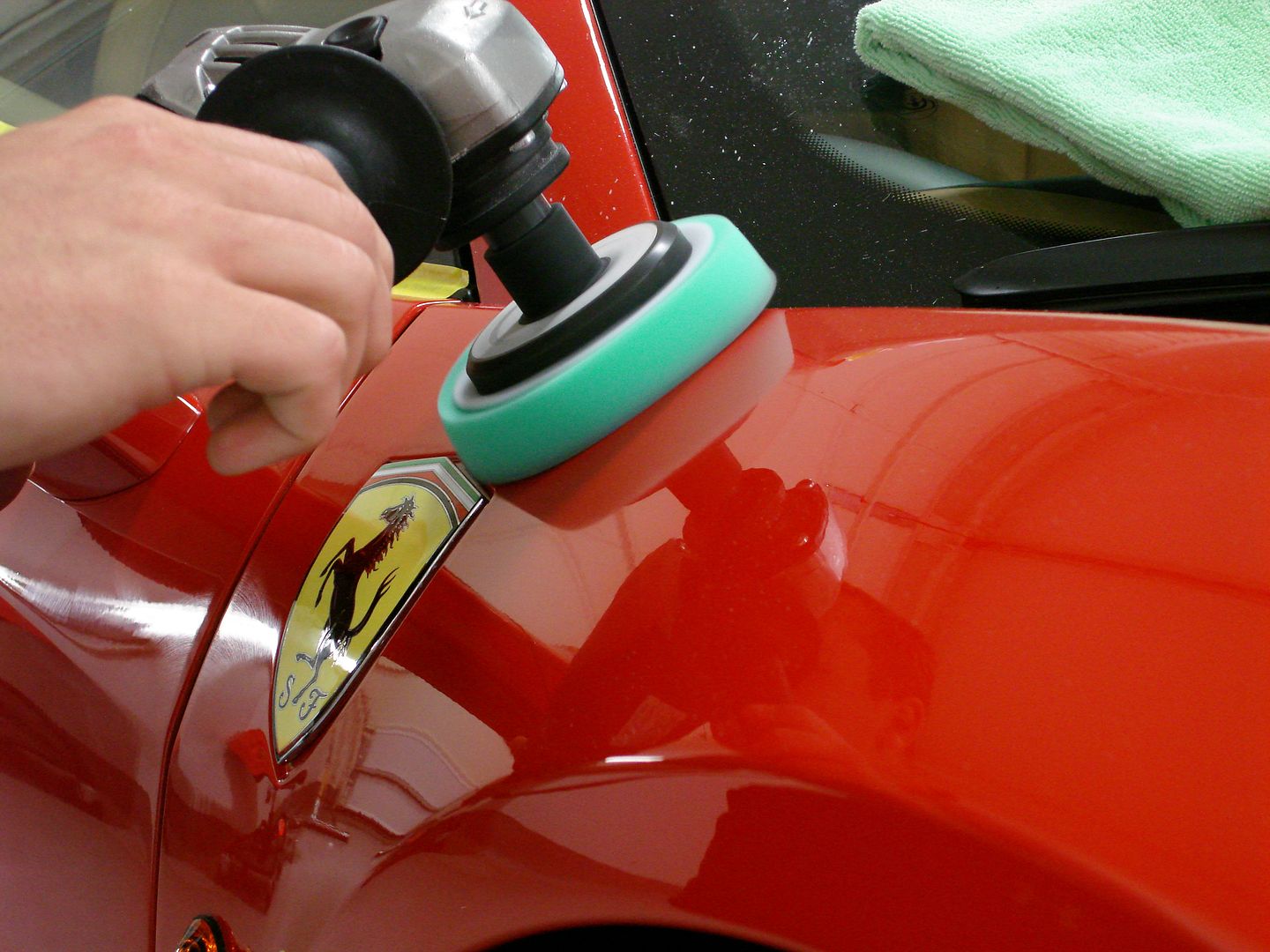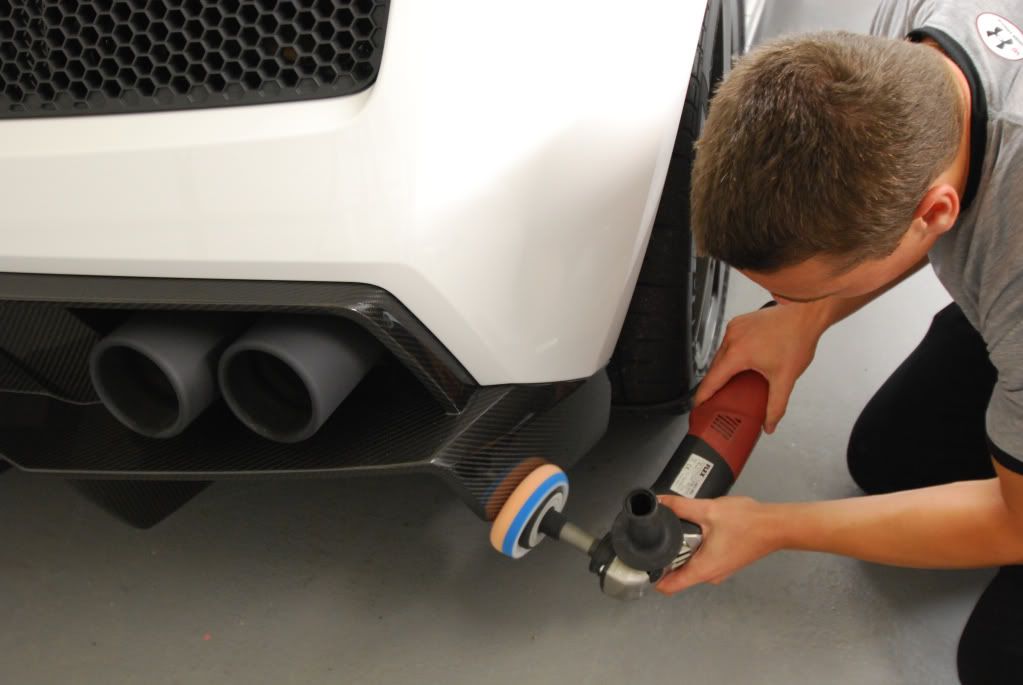Re: Placed an order for a PE14 quick questions!
quick questions!
I would strongly recommend reading through these threads,
Is it worth it to get the new Flex PE14-2-150?
New Flex PE14 - How to use ONLY a rotary buffer to finish out hologram free?
How do you stay away from holograms?
What am I doing wrong - Holograms after using the rotary buffer
Holograms all over a 2007 Honda Laguna Blue Pearl S2000
4 Part Process Still Has Swirls?
Here are some recommendations for learning how to use the rotary buffer.
Above all, work clean. This means clean your pads often, in fact, you should clean the face of the buffing pad after buffing each section. If you don't, then when you move to a new section you're going to be bringing to the new section spent product and removed paint that have built up on the face of the pad.
This will act to
dilute,
pollute and
adulterate the fresh product you use for the new section.
You need to get a Spur to clean wool pads, don't use the caveman method of using a screwdriver, while it works and I've used one more than once in my life a spur is actually a tool designed to clean the pad without damaging the wool fibers.
Get a nylon pad conditioning brush for cleaning foam pads and if you really get into buffing full time and you're doing a lot of correction work then get a pad washer.
Hang tight for a picture...

Always wipe off leftover residue from the section you just buffed before adding any fresh product if you're going to rebuff that section for the same reasons listed above.
Find a hood or trunk lid at a auto salvage yard to practice on. I go to our local auto salvage yard to get hods and they'll sell me a straight hood for an average of $80.00 that still has good paint to buff on.
Price is determined by the value of the hood, whether it's bent or not or whether it's off a BMW or a Ford.
Then get a couple of saw horses or an X-stand or fender stand at your local PBE store for around $50.00 so you have something stable to set the hood on while you're practicing.
Another option is to find a junker car that no one cares about and buff out the entire thing. You'll learn a ton about holding and using the rotary buffer and if you make mistakes no one will care.
I don't recommend learning how to use a rotary buffer on anything that's important to you or someone else, like a Black Viper that belongs to a member of the local Viper club.
Don't wear any loose clothing or any kind of chain or jewelery around your neck when using a rotary buffer and it's a real good idea to wear safety glasses because you only have two eyes and you need them both for all of your life. My little sister is blind so I have a little experience of what it's like to not have your eye sight and it makes everything more of a challenge.
It's important to wear safety glasses anytime you're operating power tools...
Running a rotary buffer all day can really wear you out if you're new to the rotary buffer as you'll use all your arm, shoulder, back, stomach and leg muscles to support and brace yourself and you'll only notice how much you used these muscles, later on that night or the next day. I always recommend wearing some type of shoe that gives you good ankle support for good ankle and leg support. Using the rotary buffer takes more leg muscles than any other power tool as you have to brace your body against the natural pull or push of the machine as you run it under pressure over a panel.
Dress comfortable, soft cotton t-shirt and jeans...
Hope that helps...













































